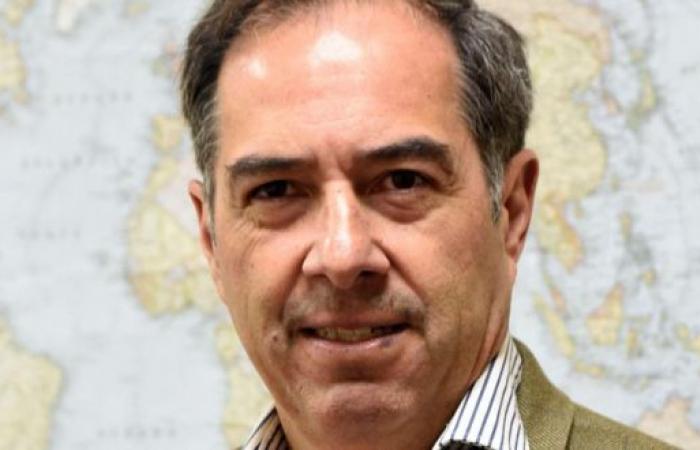The dean of the Faculty of Medicine of the University of Chile highlighted the incorporation of the drug Nirsevimab, intended to combat the syncytial virus. He also pointed out that “overall coverage was achieved” for the influenza vaccine.
Friday, June 28, 2024 17:09 hrs.
Dean of the Faculty of Medicine of the University of Chile, Miguel O’Ryan.
He Dean of the Faculty of Medicine of the University of Chile, Miguel O’Ryanaddressed the national epidemiological situation in conversation with the first edition of Radioanalysis. In this regard, he pointed out that the country is currently experiencing a Fall of influenza virus and rise of syncytial virus.
“As pediatricians, that is what worries us the most, because the syncytial virus is the one that affects children under five years of age. And the child under one year old is the one that produces the most serious symptoms,” indicated the surgeon and specialist in Pediatrics.
In any case, the academic warned that this year the curve, “Compared to the pre-pandemic years, it is a curious curve”.
“It is a much lower curve than one would expect for the end of June, compared even to last year. Last year at this date there were three times as many cases as there are now and it is a curve that appears later. Where is the syncytial virus curve going to reach? This is what we are observing because it continues to rise. But what is the most important thing? That “This year, a good part of our population of minor children is protected”he claimed.
O’Ryan thus highlighted the incorporation of the Nirsevimab drugwhich has been administered to a significant percentage of children born from October 2023 onwards.
“This should be the year where there is a break in the traditional winter critical curve of infant hospitalizations that fill our intensive care units. We are going to see that situation this year thanks to this public policy and it should be the pivotal change for the coming years as well,” she estimated.
On the other hand, when consulted about the public policy strategies on the influenza virusthe dean of the Faculty of Medicine assured that although “vaccination coverage can always be improved,” “Overall, coverage was achieved approaching, above 60, 70%, when the ideal is to reach 80% above, especially in risk groups.”
“I think the message here is that hopefully we will learn and get vaccinated sooner next year, especially people in risk groups. Why? Because if I get vaccinated when there are a lot of influenza viruses circulating, I might get vaccinated today and get infected tomorrow. The vaccine requires seven to ten days to produce its protective response,” he explained.
Regarding the measures that should be implemented to confront the anti-vaccine movementO’Ryan stated that the focus should not be on these people “because the reasons behind their logic are different, they are ideological and do not obey much scientific reasoning”, but rather in the population “that has natural or reasonable doubts about the safety of vaccines, the efficacy and effectiveness they may have”.
“Let us not be overly influenced by these anti-vaccine groups and let us counter them with arguments based on what we know and what we don’t know as well,” he concluded.
Check out the full interview here:
He Dean of the Faculty of Medicine of the University of Chile, Miguel O’Ryanaddressed the national epidemiological situation in conversation with the first edition of Radioanalysis. In this regard, he pointed out that the country is currently experiencing a drop in influenza virus and rise in syncytial virus.
“As pediatricians, this is what worries us the most, because the syncytial virus is the one that affects children under five years old. And children under one year old are the ones that produce the most serious symptoms,” said the surgeon and pediatric specialist.
However, the academic warned that this year the curve, “Compared to the pre-pandemic years, it is a curious curve”.
“It is a much lower curve than one would expect for the end of June, compared even to last year. Last year at this date there were three times as many cases as there are now and it is a curve that appears later. Where is the syncytial virus curve going to reach? This is what we are observing because it continues to rise. But what is the most important thing? That “This year, a good part of our population of minor children is protected.”he claimed.
O’Ryan thus highlighted the incorporation of the Nirsevimab medicationwhich has been administered to a significant percentage of boys and girls born after October 2023.
“This should be the year where there is a break in the traditional winter critical curve of infant hospitalizations that fill our intensive care units. We are going to see that situation this year thanks to this public policy and it should be the pivotal change for the coming years as well,” she estimated.
On the other hand, when asked about the public policy strategies on the influenza virusthe dean of the Faculty of Medicine assured that although “vaccination coverage can always be improved,” “Within everything, coverage was achieved approaching, above 60, 70%, when the ideal is to reach 80% above, especially in risk groups.”
“Here I think the message is that I hope we learn and next year we will get vaccinated, especially people from risk groups, sooner. Because? Because if I get vaccinated when there are many influenza viruses circulating, I may get vaccinated today and get infected tomorrow. The vaccine requires seven to ten days to produce its protective response,” he explained.
Regarding the measures that should be implemented to confront the anti-vaccine movementO’Ryan stated that the focus should not be on these people “because the reasons behind their logic are different, they are ideological and do not obey much scientific reasoning”, but rather in the population “that has natural or reasonable doubts about the safety of vaccines, the efficacy and effectiveness they may have”.
“Let us not be overly influenced by these anti-vaccine groups and let us counter them with arguments based on what we know and what we don’t know as well,” he concluded.
Check out the full interview here:
He Dean of the Faculty of Medicine of the University of Chile, Miguel O’Ryanaddressed the national epidemiological situation in conversation with the first edition of Radioanalysis. In this regard, he pointed out that the country is currently experiencing a Fall of influenza virus and rise of syncytial virus.
“As pediatricians, this is what worries us the most, because the syncytial virus is the one that affects children under five years old. And children under one year old are the ones that produce the most serious symptoms,” said the surgeon and pediatric specialist.
In any case, the academic warned that this year the curve, “Compared to the pre-pandemic years, it is a curious curve”.
“It is a curve that is much lower than what one would expect by the end of June, compared even with last year. Last year at this time there were three times as many cases as there are now and it is a curve that appears later. Where will the syncytial virus curve go? That is what we are observing because it continues to rise. But what is the most important thing? That “This year, a good part of our population of minor children is protected.”he claimed.
O’Ryan thus highlighted the incorporation of Nirsevimab drugwhich has been administered to a significant percentage of children born from October 2023 onwards.
“This should be the year where there is a break in the traditional critical winter curve of hospitalizations of infants that fill our intensive care units. We will see that situation this year thanks to this public policy and it should be the pivotal change for the coming years as well,” he estimated.
On the other hand, when consulted about the public policy strategies on the influenza virusthe dean of the Faculty of Medicine assured that although “vaccination coverage can always be improved,” “Within everything, coverage was achieved approaching, above 60, 70%, when the ideal is to reach 80% above, especially in risk groups.”
“Here I think the message is that I hope we learn and next year we will get vaccinated, especially people from risk groups, sooner. Because? Because if I get vaccinated when there are many influenza viruses circulating, I may get vaccinated today and get infected tomorrow. The vaccine requires seven to ten days to produce its protective response,” he explained.
Regarding the measures that must be implemented to confront the anti-vaccine movementO’Ryan stated that the focus should not be on these people “because the reasons behind their logic are different, they are ideological and do not obey much to scientific reasoning”, but rather in the population “that has natural or reasonable doubts about the safety of vaccines, the efficacy and the effectiveness that they may have”.
“Let them not be overly influenced by these anti-vaccine groups and we can counteract them, with arguments based on what we know and what we don’t know as well,” he concluded.
Check out the full interview here:
Follow us on 







